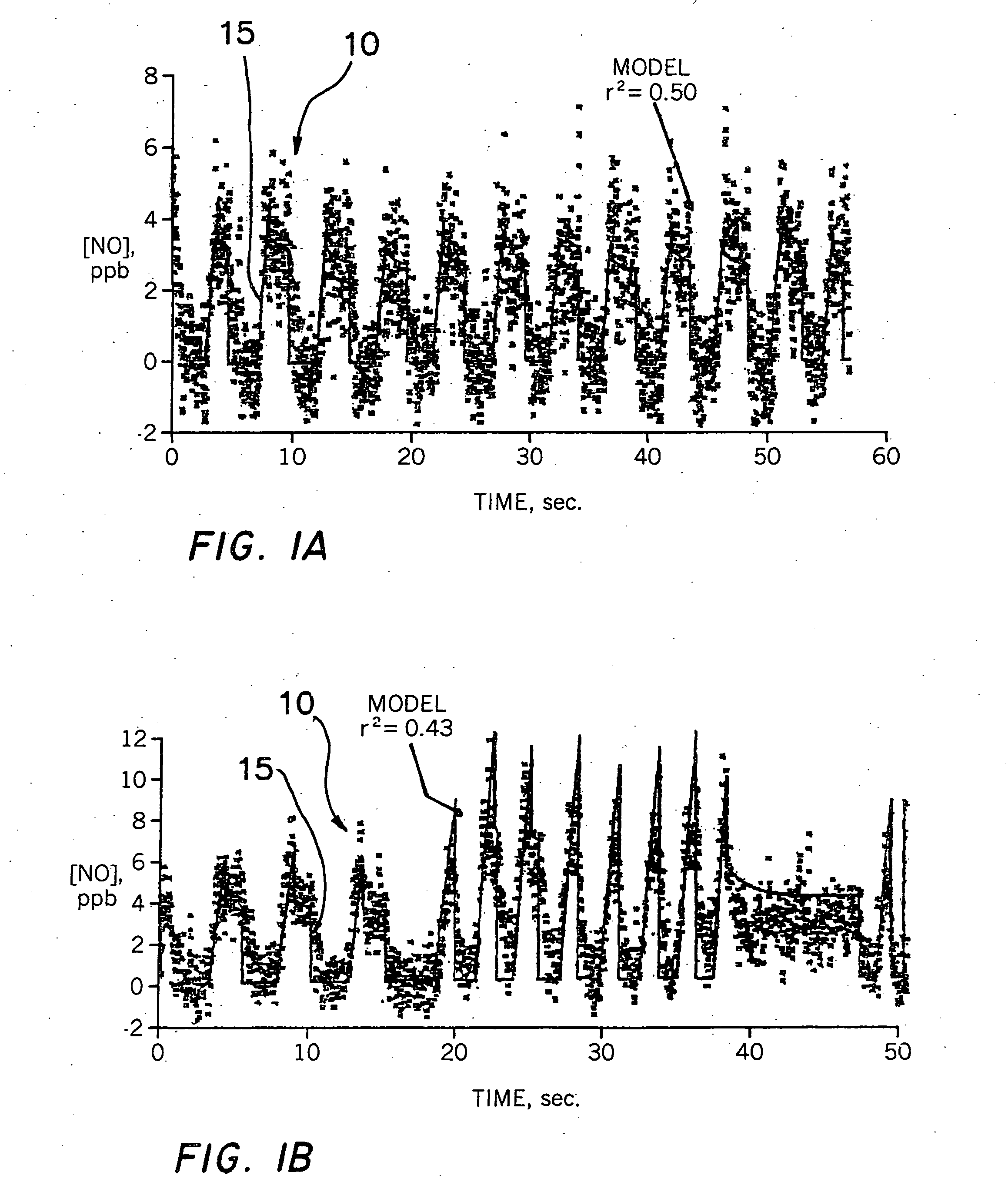Flow-independent parameter estimation based on tidal breathing exhalation profiles
a flow-independent and parameter-based technology, applied in the direction of respiratory organ evaluation, diagnostic recording/measuring, instruments, etc., can solve the problems of lack of easily recognizable characteristics and flatter tidal breathing profiles
- Summary
- Abstract
- Description
- Claims
- Application Information
AI Technical Summary
Benefits of technology
Problems solved by technology
Method used
Image
Examples
Embodiment Construction
[0031] Single breath maneuvers can distinguish inflammatory diseases, such as asthma, cystic fibrosis, and allergic alveolitis, using either exhaled concentration alone, or more positional specific parametric characterization, such as airway diffusing capacity (DawNO), maximum airway flux (J′awNO) and steady state alveolar concentration (Calv,ss). Single breath maneuvers may be difficult to perform, especially for children and individuals with compromised lung function. Hence the utility of tidal breathing to characterize NO exchange has been explored and is described herein.
[0032] Analysis of tidal breathing exhalation profiles presents new challenges relative to single breath maneuvers, such as smaller changes in lung volume and a shorter duration for exhalation. The shorter duration of exhalation reduces accumulation of NO in the airway compartment, resulting in expired NO levels, which are more than four-fold lower than those observed for single-breath maneuvers. Analyzing mult...
PUM
| Property | Measurement | Unit |
|---|---|---|
| lung volume | aaaaa | aaaaa |
| time | aaaaa | aaaaa |
| lung volume | aaaaa | aaaaa |
Abstract
Description
Claims
Application Information
 Login to View More
Login to View More - R&D
- Intellectual Property
- Life Sciences
- Materials
- Tech Scout
- Unparalleled Data Quality
- Higher Quality Content
- 60% Fewer Hallucinations
Browse by: Latest US Patents, China's latest patents, Technical Efficacy Thesaurus, Application Domain, Technology Topic, Popular Technical Reports.
© 2025 PatSnap. All rights reserved.Legal|Privacy policy|Modern Slavery Act Transparency Statement|Sitemap|About US| Contact US: help@patsnap.com



